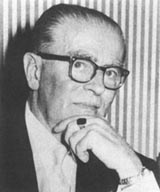A Fascination with Helping:The History of the Technische Hilfswerk

Source: THW
The Technische Hilfswerk can look back on an eventful development and many years of commitment by voluntary workers. On 22 August 1950 the Federal Minister of the Interior, at that time Mr Gustav Heinemann, and Mr Otto Lummitzsch agreed upon starting the establishment of a civil security service. Today the federal agency is one of the most modern relief organisations worldwide.
It was a time of political and cultural changes and renewals in post-war Europe when Heinemann and Lummitzsch met for the first time on August 22, 1950, in Bonn, to discuss the development of a civil protection tool in the Federal Republic of Germany. At that time, there were hardly any structures of civil protection in the newly founded republic, so the spoken promise given by the Minister of the Interior on that evening signified a crucial innovation.
One month later, Lummitzsch had Heinemann's written assignment in his hand, to begin with “the work for the organisation of a civil regulatory service". Lummitzsch became the first director of the new agency. In 1953, the Technische Hilfswerk became a federal agency, thanks to the constitutional mandate by the Federal Ministry of the Interior. The Technische Hilfswerk, founded in the era of the cold war and the division of Germany to maintain “public safety”, among other tasks, has continued to develop since then in many respects. Right from the start, the guiding principle of the Federal Agency which stands behind the operations of the voluntary staff has remained the same. To commit oneself on a voluntary basis to the protection of the population and people in distress is a humanitarian idea, which makes THW known, not only at home, but also well beyond the borders of the Republic and Europe.
The Technische Hilfswerk – the “Blue Angels”
For more than 50 years, the Technische Hilfswerk has been operating in Germany every day in order to render technical assistance.The competent help of the “Blue Angels”, as the volunteers of the Technische Hilfswerk were called by the French population after their operation in France in 1999, has ranged from the disasters that moved the nation in the 1960s, such as the flood in Hamburg and the mining accident of Lengede to the floods of the Elbe and Oder at the beginning of the new millennium.The repair work after the storm tide in the Netherlands in 1953 marks the beginning of the missions of the Technische Hilfswerk abroad. It was followed by humanitarian assistance after drought periods, civil wars and earthquakes in Africa, Europe and South America, as well as in South and South-East Asia after the Tsunami disaster.In 2005, the Technische Hilfswerk provided technical assistance to the United States for the first time in its history. The earthquake in Haiti is another chapter of humanitarian aid abroad: THW provided the population with drinking water and supported the German Embassy in coordinating the German relief measures.
Through its competent, quick and selfless relief measures domestically and abroad, the Technische Hilfswerk is making a contribution in the effort to reduce hardship and disasters. Through its operations after disasters and in its long-term reconstruction projects, it implements humanitarian aid worldwide on behalf of the Federal Republic of Germany.On occasion – as after the operation of the Technische Hilfswerk in Skopje, Yugoslavia in 1963 – this has led to a deepening of the political relations between the countries.Today the Technische Hilfswerk participates in the worldwide intermeshing of all relief organisations as an internationally active operational organisation.As a competent partner, the Technische Hilfswerk is assigned a sustaining role by the United Nations as well as in the European Union.

